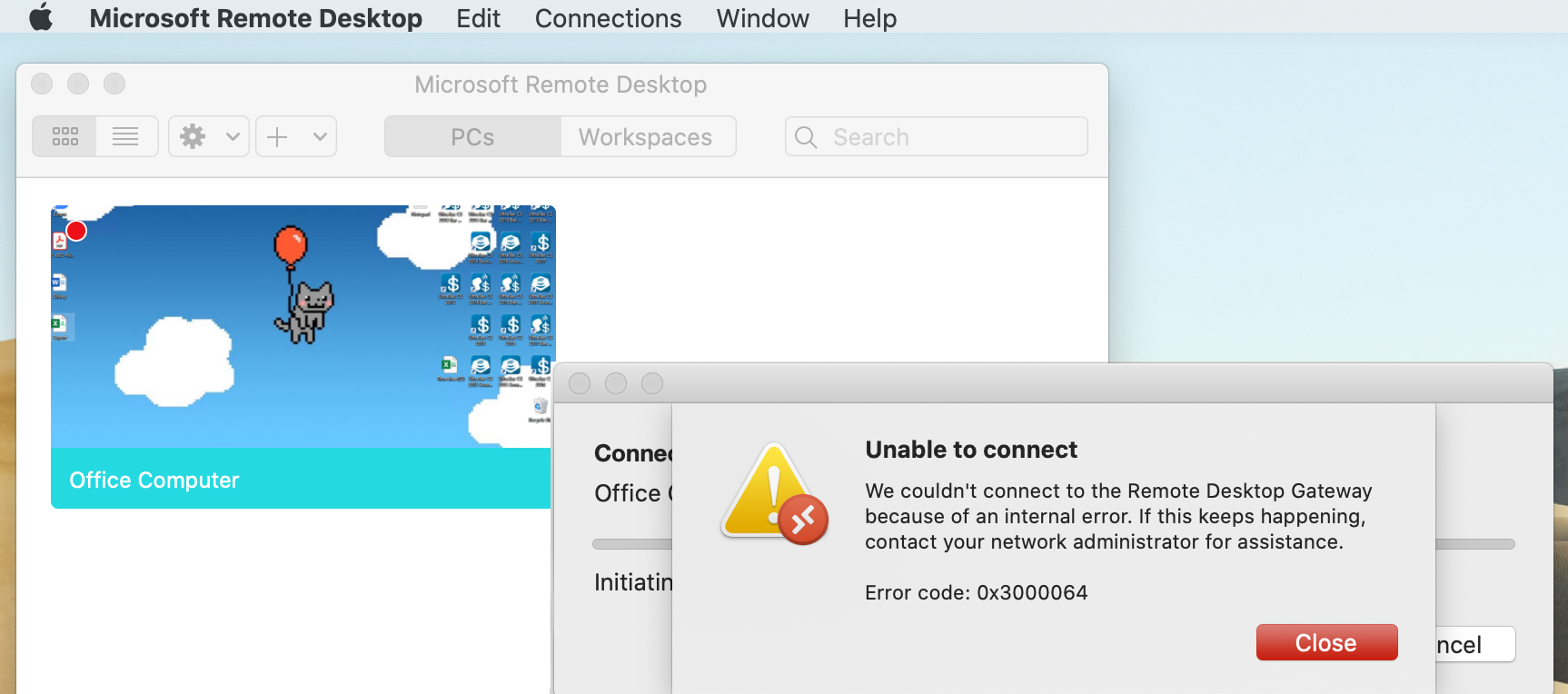Microsoft recently updated Teams to make it even easier to use audio/video within WVD! While the blog post below may still be useful, check out our more recent post on Enabling Audio and Video for Microsoft Teams on Windows Virtual Desktop using Media Optimizations. If you prefer using Audio & Video Redirection instead of Media Optimizations, you can now even configure that without PowerShell (if you created your tenant via the Azure Portal). Check out that post here: Edit Windows Virtual Desktop Properties in the Azure Portal.
Looking to let users leverage Teams through Windows Virtual Desktop(WVD)? No problem! To enable Audio/Video redirection, we’ll need to set the following custom RDP properties:
audiocapturemode:i:1enables audio capture from the local device and redirects audio applications in the remote session.audiomode:i:0plays audio on the local computer.camerastoredirect:s:*redirects all cameras.
To do this, all we need to do is run two PowerShell commands against our WVD tenant:
(This does assume you have the WVD PowerShell and Az modules installed, which were also required for standing up WVD)
You can use this command to set any of the RDP settings, which can be found here: https://docs.microsoft.com/en-us/windows-server/remote/remote-desktop-services/clients/rdp-files. For example, if you’re looking to disable clipboard access as well, the command would be:
For depolying Teams on RDS ( remote desktop service), I did a lot of research on it, as far as I know Microsoft Teams support being deployed on Virtualized Desktop Infrastructure (VDI). So it is related how you deployed the RDS with VDI. Download this app from Microsoft Store for Windows 10, Windows 8.1, Windows 10 Mobile, Windows Phone 8.1, Windows 10 Team (Surface Hub), HoloLens. See screenshots, read the latest customer reviews, and compare ratings for Microsoft Remote Desktop.
Once that’s configured, if you open the Remote Desktop client (download for Windows 7/10 here) you will see Remote Audio and Camera working in Teams:
Now – you may notice that through the HTML5 WVD connection, there is no microphone input device under settings:
This is because, unfortunately, HTML5 does not support Audio Redirection:
So make sure you keep on eye out on which settings are supported! The supportability is listed on the same site as the settings. Happy deploying! 💻
 -->
-->This article describes the requirements and limitations for using Microsoft Teams in a remote desktop services (RDS) environment.
What is RDS?
Remote Desktop Services (RDS) is the platform of choice for building virtualization solutions for every end customer need. RDS lets you deliver individual virtualized applications, provide secure mobile and remote desktop access, and provide end users the ability to run their applications and desktops from the cloud.
RDS offers deployment flexibility, cost efficiency, and extensibility. RDS is delivered through a variety of deployment options, including Windows Server 2016 for on-premises deployments, Microsoft Azure for cloud deployments, and a robust array of partner solutions.Depending on your environment and preferences, you can set up the RDS solution for session-based virtualization, as a virtual desktop infrastructure (VDI)
Currently, Teams in a remote desktop services environment is available with support for collaboration and chat functionality. To ensure an optimal user experience, follow the guidance in this article.
Teams on RDS with chat and collaboration
If your organization wants to only use chat and collaboration features in Teams, you can set user-level policies to turn off calling and meeting functionality in Teams.
Set policies to turn off calling and meeting functionality

You can set policies by using the Microsoft Teams admin center or PowerShell. It might take some time (a few hours) for the policy changes to propagate. If you don't see changes for a given account immediately, try again in a few hours.
Calling polices: Teams includes the built-in DisallowCalling calling policy, in which all calling features are turned off. Assign the DisallowCalling policy to all users in your organization who use Teams in a virtualized environment.
Meeting policies: Teams includes the built-in AllOff meeting policy, in which all meeting features are turned off. Assign the AllOff policy to all users in your organization who use Teams in a virtualized environment.
Assign policies using the Microsoft Teams admin center
To assign the DisallowCalling calling policy and the AllOff meeting policy to a user:
In the left navigation of the Microsoft Teams admin center, go to Users.
Select the user by selecting to the left of the user name, and then select Edit settings.
Do the following steps:
a. Under Calling policy, select DisallowCalling.
b. Under Meeting policy, select AllOff.
Select Apply.
To assign a policy to multiple users at a time:
- In the left navigation of the Microsoft Teams admin center, go to Users, and then search for the users or filter the view to show the users you want.
- In the ✓ (check mark) column, select the users. To select all users, select the ✓ (check mark) at the top of the table.
- Select Edit settings, make the changes that you want, and then select Apply.
Or, you can also do the following steps:

In the left navigation of the Microsoft Teams admin center, go to the policy you want to assign. For example:
- Go to Voice > Calling policies, and then select DisallowCalling.
- Go to Meetings > Meeting policies, and then select AllOff.
Select Manage users.
In the Manage users pane, search for the user by display name or by user name, select the name, and then select Add. Repeat this step for each user that you want to add.
When you're finished adding users, select Save.
Assign policies using PowerShell
The following example shows how to use the Grant-CsTeamsCallingPolicy to assign the DisallowCalling calling policy to a user.
To learn more about using PowerShell to manage calling policies, see Set-CsTeamsCallingPolicy.
Microsoft Remote Desktop Server Setup
The following example shows how to use the Grant-CsTeamsMeetingPolicy to assign the AllOff meeting policy to a user.
Microsoft Remote Desktop Download
To learn more about using PowerShell to manage meeting policies, see Set-CsTeamsMeetingPolicy.
